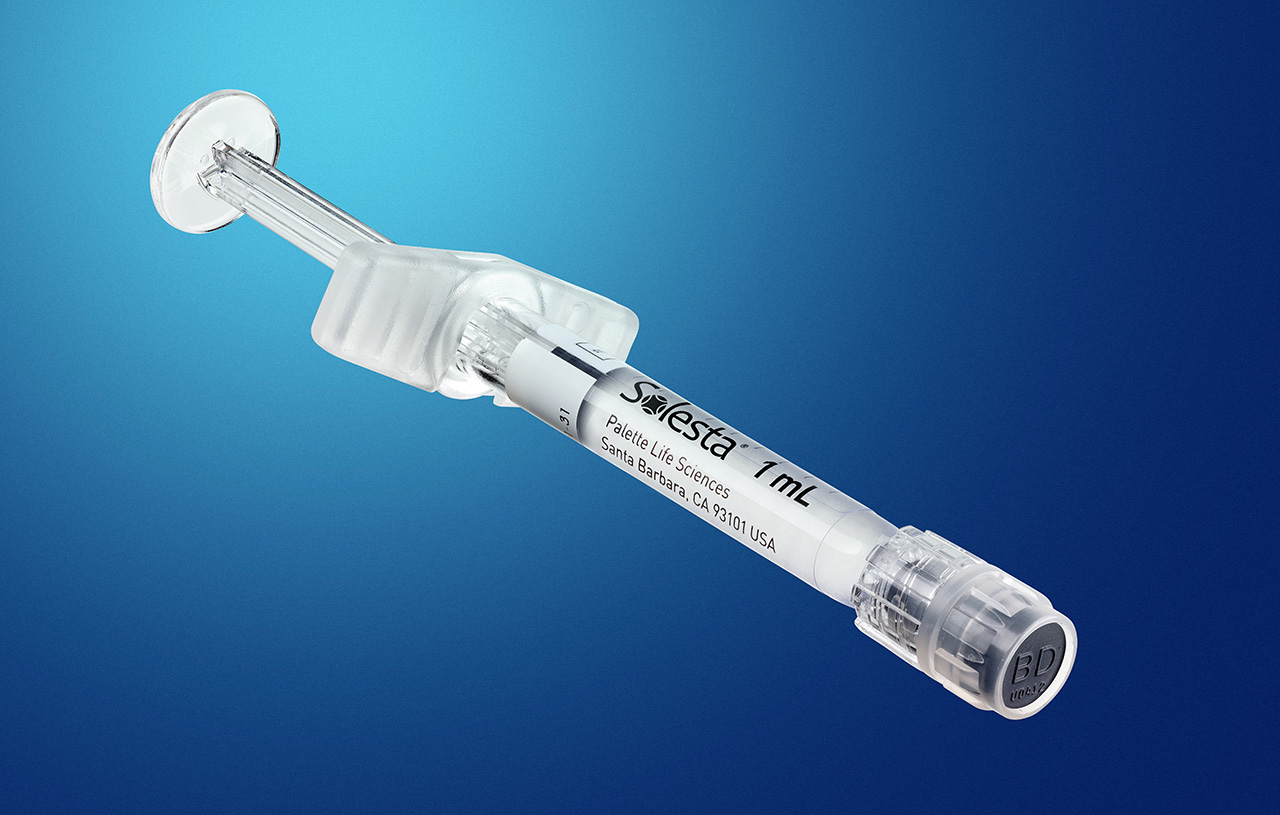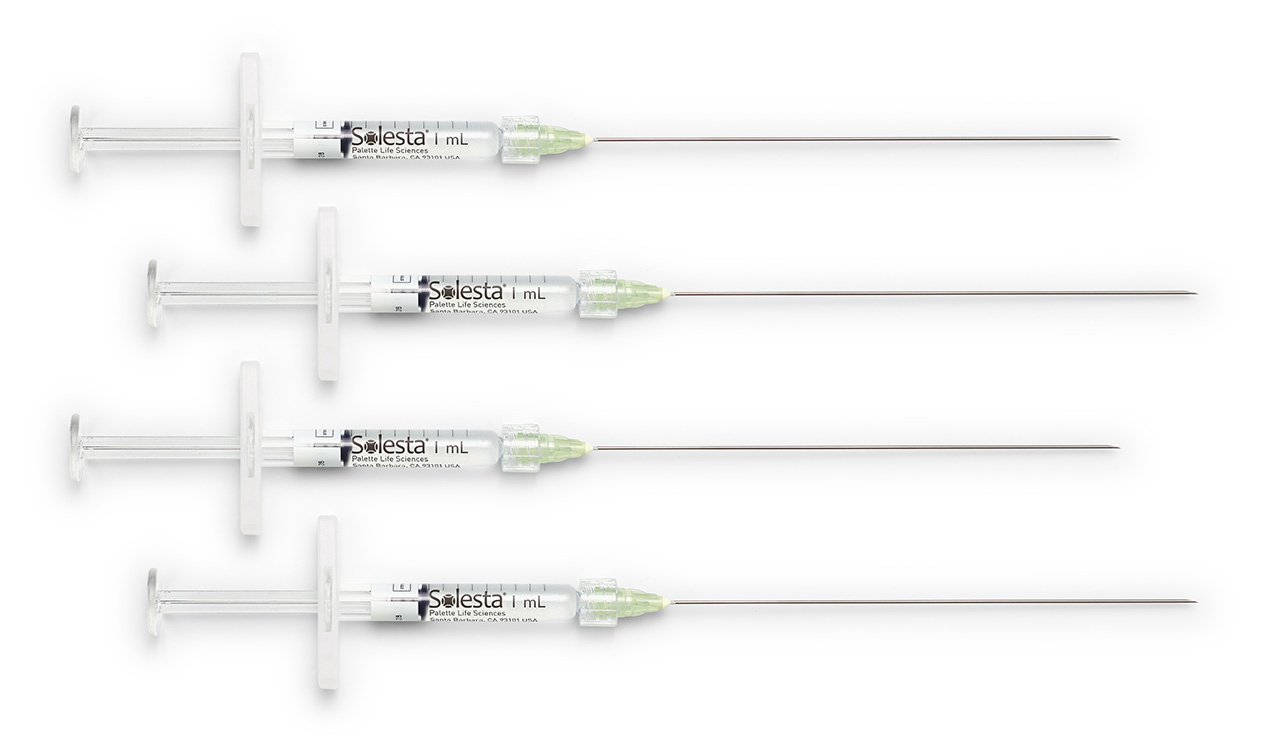Treatment options for fecal incontinence often depend on the severity of the condition and may include the following:
 A gel composed of two naturally occurring materials- dextranomer and hyaluronic acid (HA) - is administered by your doctor to improve the bulk and thickness of the anal walls. This is a quick, nonsurgical approach and the HA in Solesta has been used in more than 40 million procedures worldwide,4 often as a dermal filler for wrinkle correction.
A gel composed of two naturally occurring materials- dextranomer and hyaluronic acid (HA) - is administered by your doctor to improve the bulk and thickness of the anal walls. This is a quick, nonsurgical approach and the HA in Solesta has been used in more than 40 million procedures worldwide,4 often as a dermal filler for wrinkle correction.
Solesta has been proven to significantly reduce accidents and help patients achieve a better quality of life.5 Studies have shown that Solesta can help patients return to a more active lifestyle (socializing, going to work, etc.), and reduce overall depression and embarrassment associated with their bowel control problems.
Solesta is indicated for the treatment of fecal incontinence in patients 18 years and older who have failed conservative therapy (e.g. diet, fiber therapy, anti-mobility medications).
Patients receiving Solesta experienced a 3X greater improvement in their FIQOL Lifestyle score than the control group.
Surgery
 There are a variety of surgical approaches to treat bowel control problems. Many of these approaches involve the repair or replacement of part of the anus or sphincter.
There are a variety of surgical approaches to treat bowel control problems. Many of these approaches involve the repair or replacement of part of the anus or sphincter.
Electrical stimulation, also called sacral nerve stimulation, is another type of surgery. It involves placing electrodes in the nerves to the anal canal and rectum and continuously stimulating these nerves with electrical pulses. First, doctors will run a test phase to see if it works. If it does work, then another surgery will be performed to implant it permanently. Regular patient follow-up is necessary to ensure that the treatment is working, and to confirm that the device and its battery are functioning properly.
Potential considerations for surgery include prolonged recovery period, complications and risk of infection.
